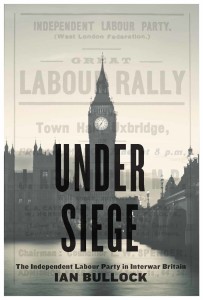Parliamentary democracies have an extraordinary capacity to produce third parties: NDP, CCF, WCC, Greens, Progressives, Reformers, Libertarians, Social Creditors, Confederation of Regions, the Reconstruction Party and others. If their historical impact is uneven, each protest movement bettered the nation by rattling the establishment and giving voice to grievance.
Canadians take for granted they may choose from four or five parties on a ballot. Pity the American who has the pick of two – red team or blue team – knowing neither has to be very good to maintain a 50 percent chance of winning.
Historian Ian Bullock examines such a protest movement forgotten years after its collapse, the U.K. Independent Labour Party. Bullock’s affectionate account Under Siege explains why so many protest movements flame and then fade. Years after the ILP disbanded, its members became Liberals or Conservatives “or simply became alienated from politics altogether,” writes Bullock.
They united briefly in a shared vision of how society might be different. This is the trajectory of all protest movements, a magnificent burst of ideals ending in implosion or whimpering, with fine principles lost to necessary compromise with powerful vested interests. It is always a compelling story. Under Siege is no exception.
Founded as a cooperative movement in 1893, the Independent Labour Party platform was radical to Victorians yet instantly recognizable to Canadians today. It advocated public ownership of utilities (see Ontario Hydro or the Manitoba Telephone System) as well as transportation (St. Lawrence Seaway and Marine Atlantic), public control of banks (see Alberta Treasury Branches). abolition of capital punishment, votes for women, guaranteed annual income and an early version of the baby bonus.
Like all third parties, the ILP thought big — impractically so. In 1931 its members introduced a private Living Wage Bill to appoint a panel comprised of three housewives, three trade unionists and three cooperative leaders to calculate “what should constitute a living wage” and report to Parliament in 90 days. The bill did not have the remotest possibility of becoming law, notes Historian Bullock.
Adherents remained true believers. A longtime member, a former millworker appointed to Britain’s Labour cabinet in 1924, refused to wear the customary top hat to his swearing-in at Buckingham Palace. Another explained that Independent Labour was neither Labour nor Communist, and the distinctions were not a question of cheese-paring: “Under state socialism, nationalized industry would have to be managed by a bureaucracy on a highly centralized system. The ILP never was state socialist in that way. Control will be based upon the workshops, federated into the district, federated into the nation, and finally federated into an international organization.”
The Party at its peak had 120 members in the British Commons. When it broke with Labour in 1931 following a dispute over unemployment insurance benefits, 85 percent of the membership melted away. “All of the debates and events including the ILP during the interwar years contributed, directly and indirectly, to the policies, culture and ambience of the labour movement after 1945,” writes Bullock.
Under Siege ends in heartbreak. Protest often does. But isn’t it worth it!
By Holly Doan
Under Siege: The Independent Labour Party In Interwar Britain, by Ian Bullock; Athabasca University Press; 416 pages; ISBN 9781-7719-91551; $44.95








